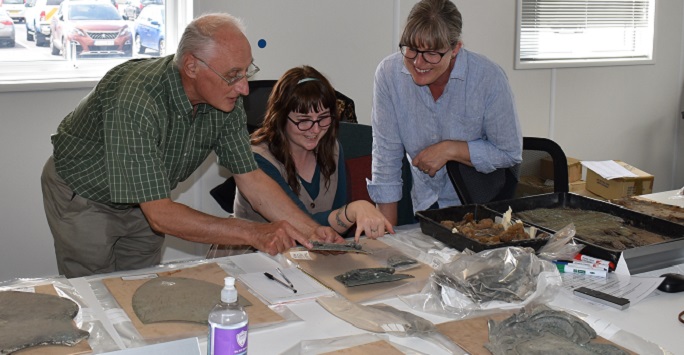
Professor Harold Mytum shares his experience of working at the Castle Street burial ground in Hull.
Modern development may lead to the disturbance of human remains, and ethical and practical questions arise as to what should be the fate of these exhumed skeletons. Those in burial grounds controlled by the Church of England have this decided through the faculty process (the ecclesiastical version of planning permission) where the Chancellor (an ecclesiastical judge) sets out conditions based on church law and advice from the Diocesan Advisory Committee (DAC). Professor Harold Mytum has long been a member of the York DAC, and has been involved in the project design, implementation and post-excavation processes associated with a large-scale project at the Castle Street burial ground, Hull. This burial ground was set up when the space around Holy Trinity church, (now Hull Minster) became full.
The excavations, by Oxford Archaeology North, were necessary before Highways England could carry out a major road scheme on the A63 as it passed close to the centre of the city. The recovery of some unexpected finds, as well as well-preserved coffin fittings, meant that permission to emend the terms of the original faculty permission was necessary so that some could be retained rather than reburied. Given the public benefit these would provide, permission was granted, so then specific retention decisions had to be made – to rebury or not rebury?
Harold Mytum is a recognised expert and researcher of historic mortuary archaeology, and co-editor and chapter author for Death Across Oceans. Archaeology of Coffins and Vaults in Britain, America and Australia (Smithsonian Institution Scholarly Press, 2018). Harold met with staff from Highways England, Oxford Archaeology North, Humber Field Archaeology, and Hull Minster to decide what items to retain and what to reinter with each associated skeleton. Harold was able to ensure that the most significant fittings will continue to be available for display and public interpretation at Hull Minster, whilst also being accessible for further research. Ethical as well as conservation and interpretation criteria were applied to reach a consensus between all parties.
The rest of the artefacts and human remains are being reinterred in a specially-excavated zone in part of the Castle Street burial ground not to be destroyed by the road scheme. Harold continues to be involved with the reinstatement of this area and the interpretation of the memorials which will be re-erected there.
Discover more
Study in the Department of Archaeology Classics and Egyptology at the University of Liverpool.
Find out more about about Professor Harold Mytum's research